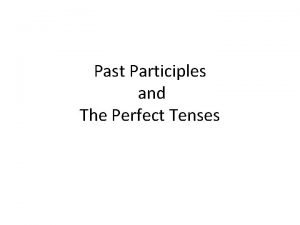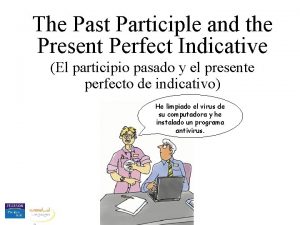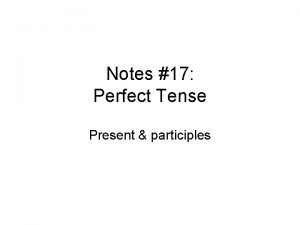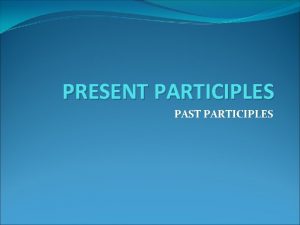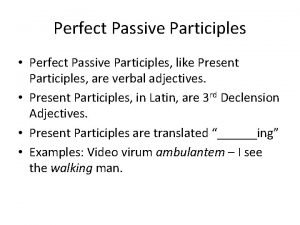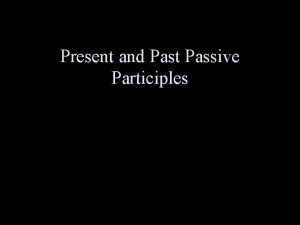Participles Present Perfect and Past Perfect Past Participles








- Slides: 8

Participles, Present Perfect and Past Perfect

Past Participles In Spanish, there are both regular and irregular past participles. Past Participles are used in three places 1). As adjectives, (usually with the verb “estar”. 2). as part of the Perfect Tenses (with the verb “haber”) and 3). as the passive voice (with the verb “ser”). Regular Past Participles are formed by adding the following endings to the stem of the verb. -ar verbs -ado (hablado) -er verbs -ido (comido) -ir verbs -ido (recibido)

Irregular Past Participles There are many verbs in Spanish which have irregular past participles, including the following: Abrir abierto poner Decir dicho romper roto Escribir escrito ver visto Hacer hecho volver vuelto Morir muerto puesto

Past Participles as Adjectives When past participles are used as adjectives they must agree with the gender or number of the nouns they modify. Las cartas ya están escritas. La televisión está rota Las ventanas no están abiertas, están cerradas. Mis hermanos no están muertos, están dormidos.

The Present Perfect Tense is formed by the auxilliary verb “haber” and the past participle. Yo he hablado Tú has comido El/Ella/Ud. ha dicho Nosotros hemos abierto Vosotros habéis Ellas/Uds…. han roto hecho

The present perfect is used in Spanish similarly to how it’s used in English. (It describes something done “once upon a time”, “recently” or that started in the past and is still going on). Quién ha estacionado su carro en la fuente? Has visitado París alguna vez? There are times when Spanish speakers use the present perfect when they really mean the preterit. Ha llegado hace poco. Hemos ido a su casa recientemente.

Past Perfect Also called the Pluperfect or the Pretérito pluscuamperfecto. The past perfect is formed with the imperfect form of “haber” and the past participle of the verb. Yo había dicho Tú habías mencionado Él había vuelto Nosotros habíamos recibido Vosotros habiáis roto Ellos habían cerrado

In Spanish, as in English, (had +PP) the pluperfect is used as the “past of the past”, it refers to actions, states or events that were already completed before the start of another past action. Cuando trajiste cena ya había comido. Cuando llegué ellos ya habían salido. Antes de tener 18 años Elena nunca había tenido un novio.


